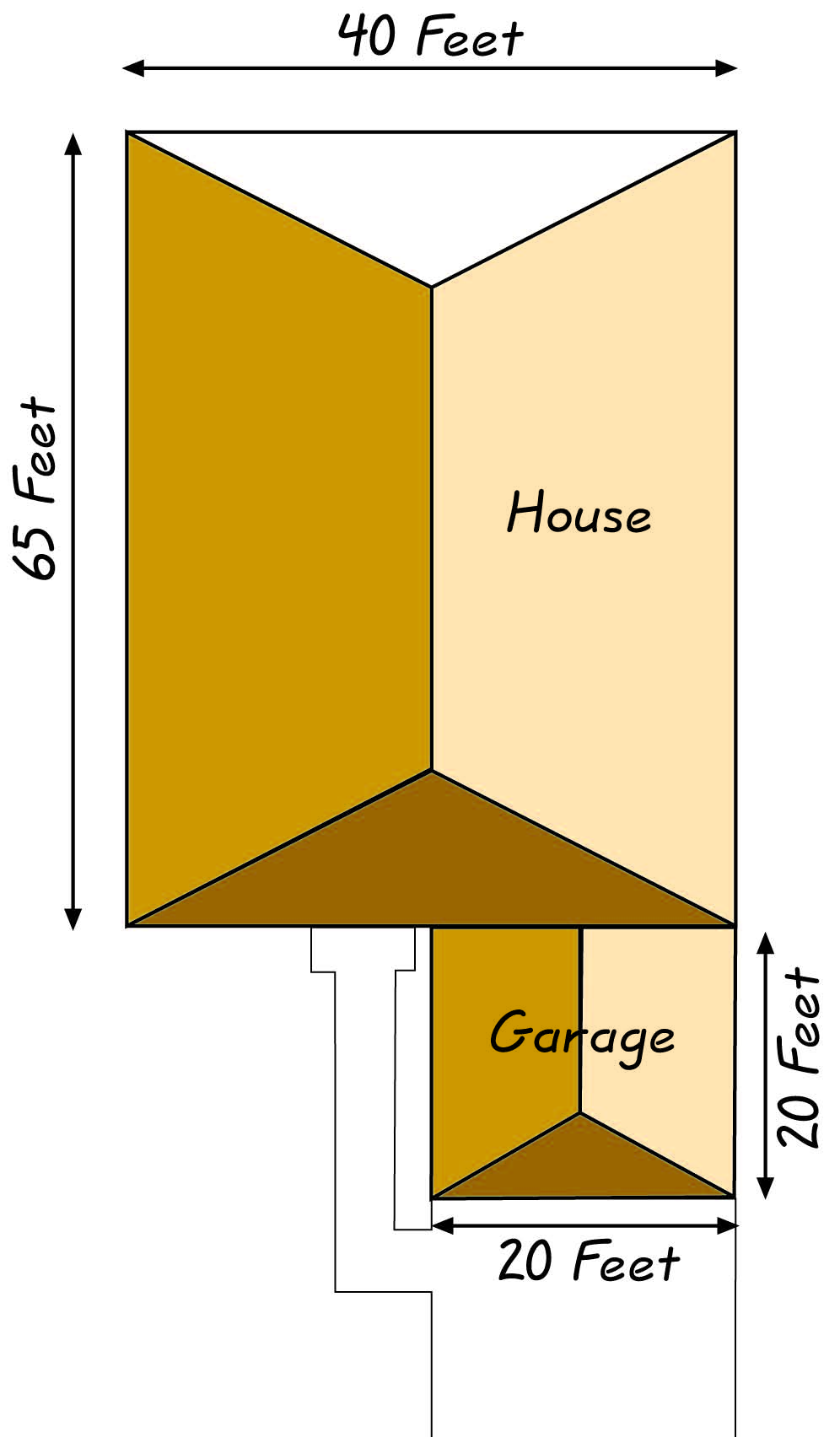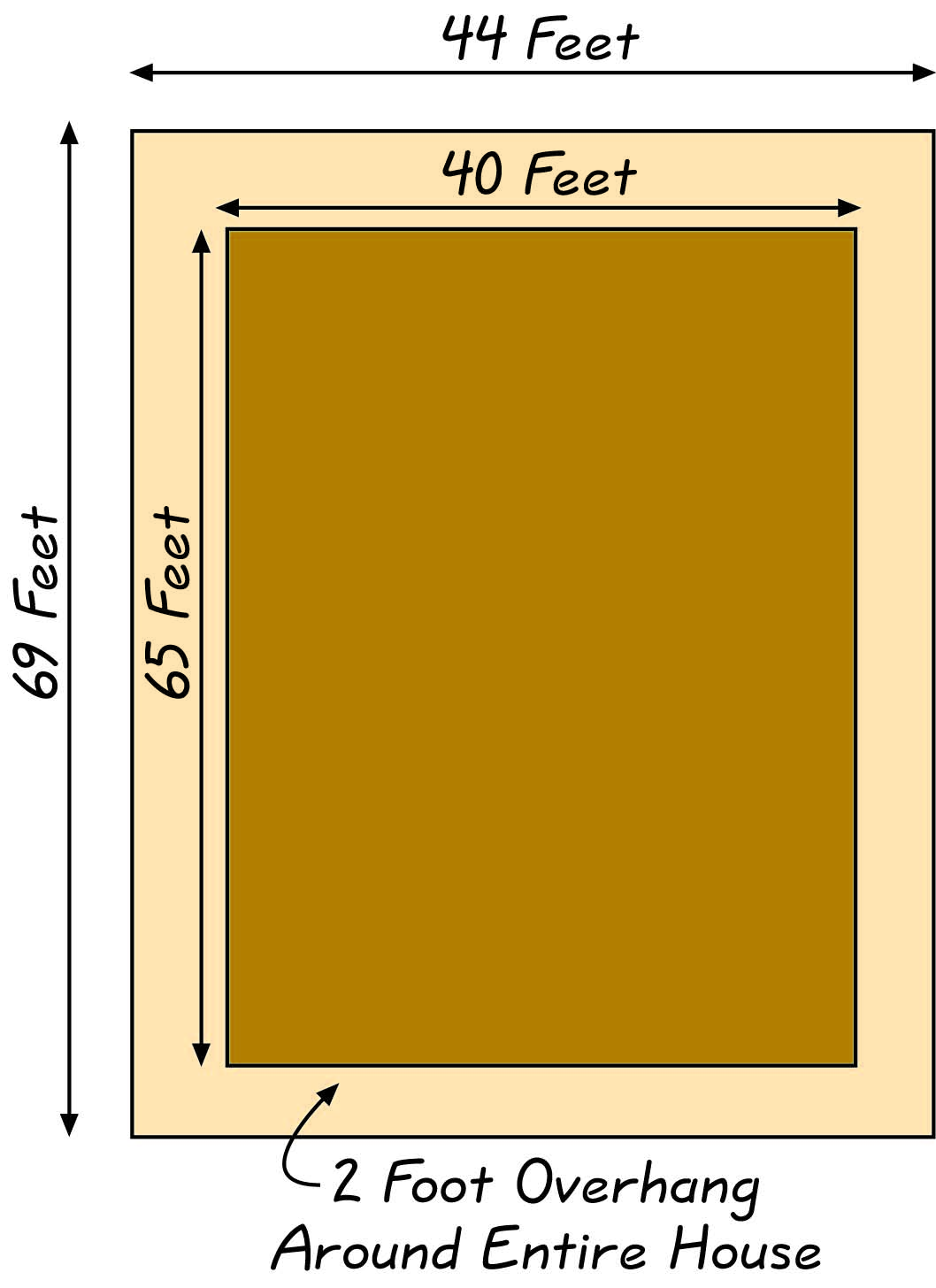The PermaDesign Weblog, with Nate Downey and Melissa McDonald!
Roof-Reliant Landscaping™ Step 11B: Sizing Your Cistern: Part II-Roof Shape
It is not uncommon for a roof to be affected by other factors that can slightly complicate this simple calculation. The most common of these factors occurs when two roof surfaces need to be added together, as in the figure below. The house shown below has a garage, which should be included in the total roof square footage. Buildings such as portals, sheds, shade structures and other roof surfaces that can serve as collection areas also need to be included in your calculations.

Note that the increased angle of a pitched roof does not increase your catchment area. While it is true that more materials are needed to cover a house with a pitched roof than a flat roof, a pitched roof still covers the same amount of ground surface as a flat roof (of the same length and width measured at the given buildings’ ceilings).
One advantage that pitched-roof structures do have over flat-roof structures is that pitched roofs often have large overhangs. Given the same building footprint, a pitched-roof house will typically have larger roof dimensions than a flat-roof house. In the figure below, we see how a two-foot overhang can significantly increase a roof’s catchment area.

Other minor mathematical complications occur when roof lines are not rectilinear. Typically, such roofs can be reduced to either triangular or curvilinear shapes. In the case of triangular shapes in which one of the angles is 90 degrees, simply multiply the length of the roof by the width of the roof, then divide this product by two:
Length x width / 2 = area of a triangle
Curvilinear shapes are rare, but most of them can be reduced to circular shapes, the areas of which are determined by multiplying the square of the radius of the circle by pi (3.14).
Radius x radius x 3.14 = area of a circle
It is imperative that your square-footage calculation is accurate. The proper sizing of your cistern, the total cost of your project and perhaps even the success of your project will depend on your precision here.
10/08/2015 | (1) Comments










Comments
good